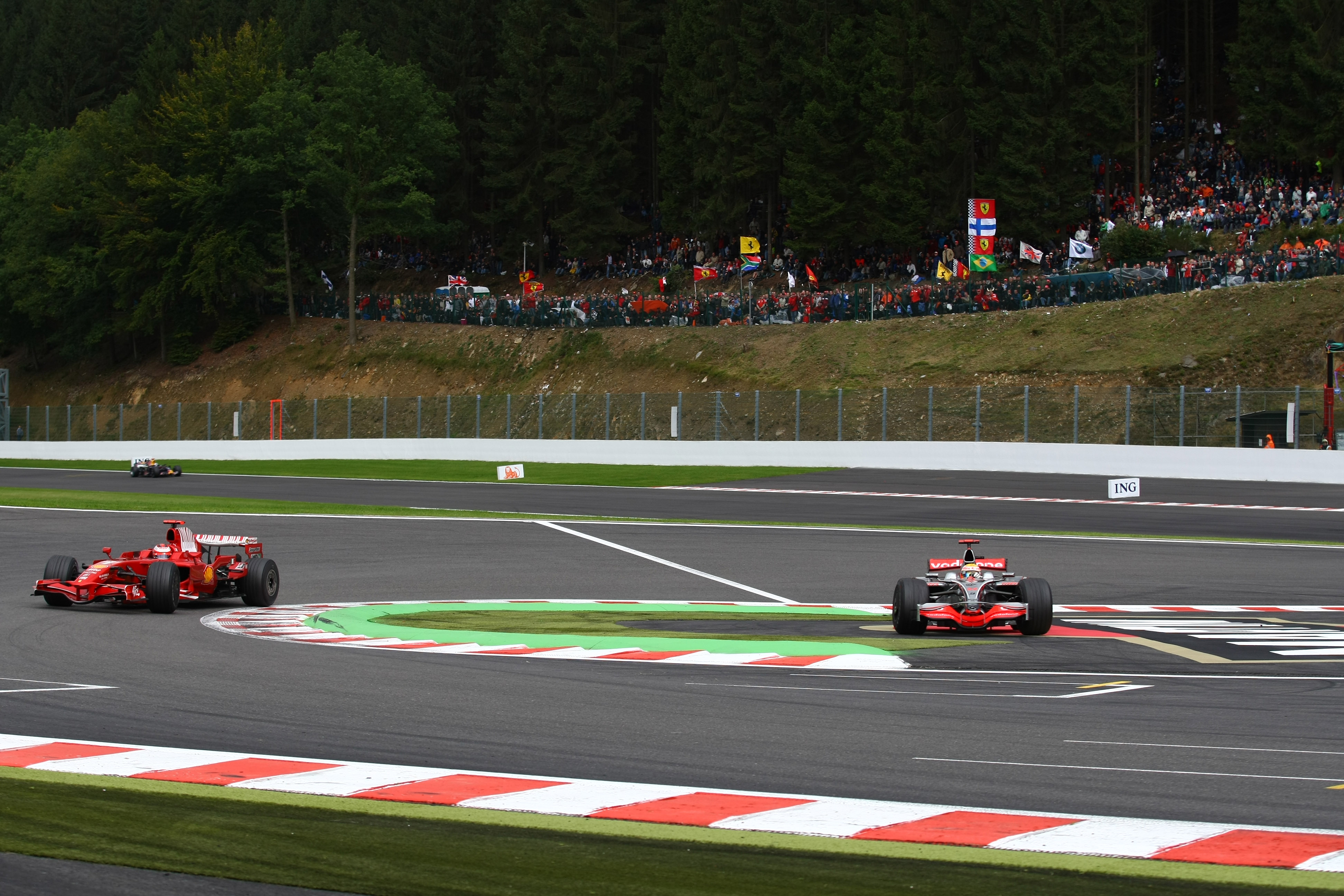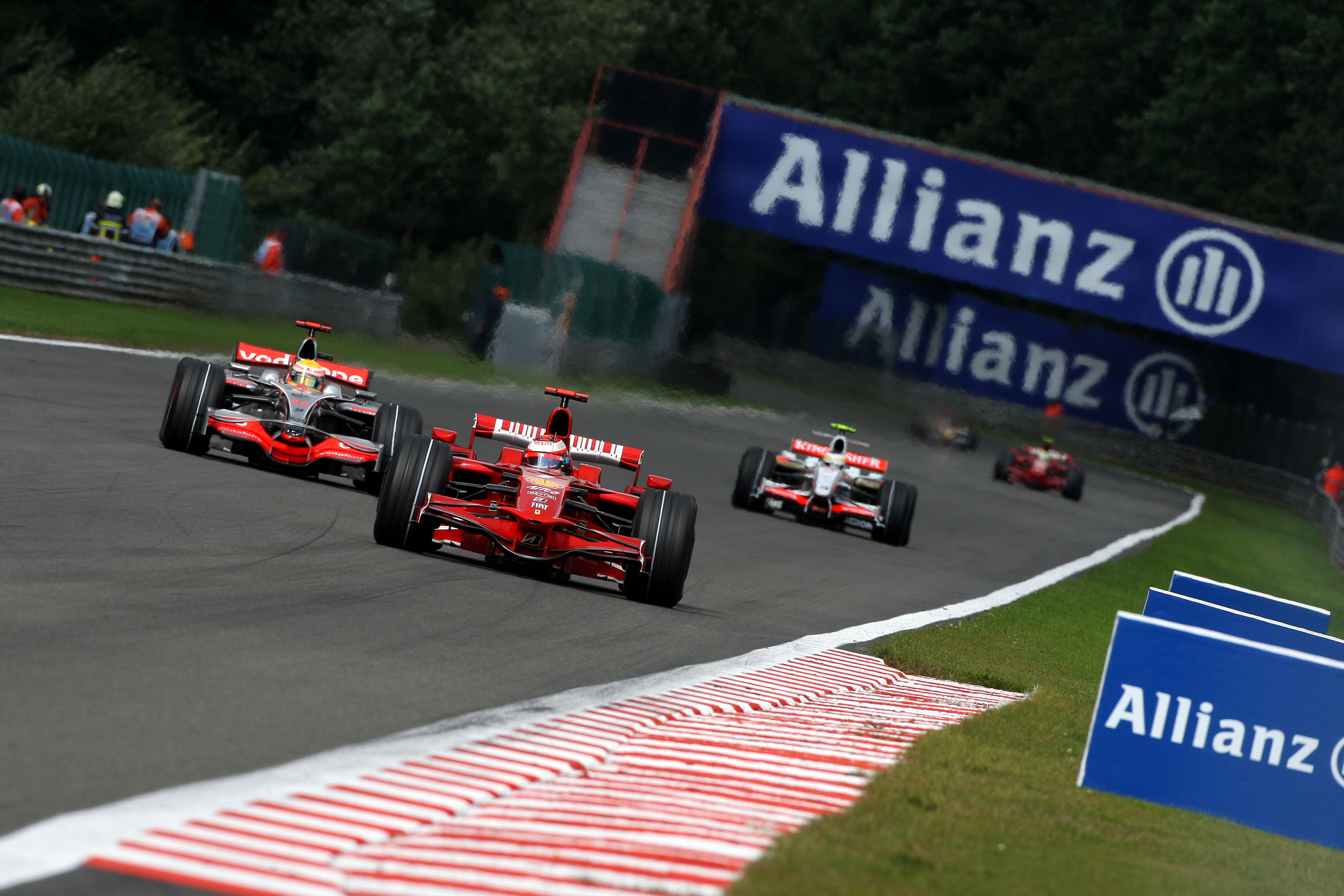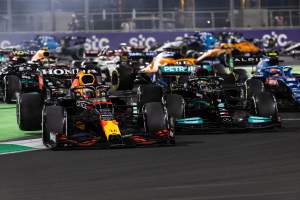Up Next

Lewis Hamilton rarely invokes past races, usually admitting to not remembering what happened even earlier in the same Formula 1 season, let alone many years ago. But during the post-race press conference in Saudi Arabia, he revealed that the lessons of the 2008 Belgian Grand Prix played a part in his thinking during the race at the Jeddah Corniche circuit.
Hamilton won the Spa 2008 race on-the-road, but was demoted to third behind Ferrari’s Felipe Massa and BMW Sauber driver Nick Heidfeld thanks to a 25-second time penalty issued long after the race.
This was in lieu of a drive-through penalty given the offence occurred so late in the race. So why did Hamilton bring it up?
It’s relevant to what happened in the Saudi Arabian Grand Prix because of the circumstances that led to Hamilton’s 2008 penalty. It involved two factors that played a role on Sunday given he passed Kimi Raikkonen for the lead by cutting the track, then gave the place back before immediately launching a pass for the lead. Fast forward 13 years and it was Verstappen who was cast in the Hamilton role.
“I was just reminiscing about 2008 in Spa, in my first championship-winning year,” said Hamilton when asked about the moment he attempted to pass Verstappen around the outside of Turn 1, only for the Red Bull driver to force both onto the run-off – a moment that led to race director Michael Masi advising that the position be given back, creating the conditions for the subsequent collision.
“I was fighting Kimi into the last corner, the Spa chicane, and he ran me wide. I went across the chicane and I had to let him back past, but then I overtook him straight away.
“I remember [race director] Charlie Whiting telling the team that it was OK and then finishing the race but then getting a penalty and finishing third.”
The incident happened with two laps remaining with light rain falling and the leaders on slicks. Raikkonen had controlled the race since passing Hamilton for the lead on the second lap, but the McLaren driver was quicker once the rain came and closed the small gap to the leader.

As Hamilton described, he got a run on Raikkonen on the blast to the final chicane and drew alongside the Ferrari driver. Raikkonen defended the inside line and used the full track width mid-corner, with Hamilton steering left across the run off.
Hamilton emerged on the start/finish straight just ahead, but then lifted off. This allowed Raikkonen to retake the lead – just – as Hamilton pulled in behind Raikkonen’s Ferrari and was momentarily tucked under his rear wing before diving up the inside into the La Source hairpin.
Hamilton crossed the line first after a chaotic final two laps as the rain worsened, with Raikkonen crashing out. But after the race, he was hit with a penalty. This took McLaren by surprise given Whiting had indeed said the pass was acceptable.
“From the pitwall, we asked race control to confirm that they were comfortable that Lewis had allowed Kimi to repass,” said McLaren team principal Martin Whitmarsh.
“They confirmed twice that they believed that the position had been given back in a manner that was OK.
“If race control had instead expressed any concern regarding Lewis’s actions at that time, we would have instructed Lewis to allow Kimi to repass for a second time.”

The trouble is, the race director can only offer an opinion in such circumstances, while the stewards are independent of this.
The stewards considered the incident, deemed that Hamilton was closer to Raikkonen than he would otherwise have been on the run to La Source thanks to having cut the chicane and then given the position back, hence the penalty.
While you could – and arguably should – shrug off the incident on the basis it made no difference to the result, the logic was sound given passes into the hairpin were rare even 13 years ago and Hamilton had been so close to Raikkonen
McLaren appealed the time penalty. The FIA international court of appeal hearing took place 15 days after the race, with McLaren arguing the penalty should be annulled and victory handed back to Hamilton. Its contention was that Hamilton gained no advantage from cutting the chicane given he handed the lead back to Raikkonen.
However, this argument proved moot because the case was deemed inadmissible and McLaren was ordered to pay costs. This was because drive-through penalties were “not susceptible to appeal”, according to the FIA’s international sporting code, with McLaren’s attempt to argue that it was a time penalty and therefore could be appealed dismissed given the penalty issued was a drive-through. This only became a time penalty because there wasn’t time to issue the drive-through during the race.

In the drivers’ briefing during the Italian GP weekend at Monza, which followed just a week after Spa, the incident was discussed and drivers were told they needed to wait for at least a corner before attempting to pass a car they have just let past.
But such guidance has never been formalised. Furthermore, the introduction of the DRS in 2011 has added an extra complication into the mix, with this a crucial factor in Hamilton hitting the back of the braking Verstappen .
GPDA chairman Alex Wurz suggested on Twitter that there’s an easy solution to this. It’s a logical idea and it’s clear that the FIA should look at ways to avoid a repeat of such a situation
“If a driver elects to give position back before the DRS detection, he shall not be allowed to use DRS thereafter,” tweeted Wurz.
“Aim: eliminating sketchy tactical slowing down leading to unfortunate ‘misunderstandings and situations’.”
It’s a sensible idea. After all, what Spa 2008 teaches us is that similar situations can repeat and it’s all too easy for the lessons – and the unofficial guidance of the past – to be forgotten.








